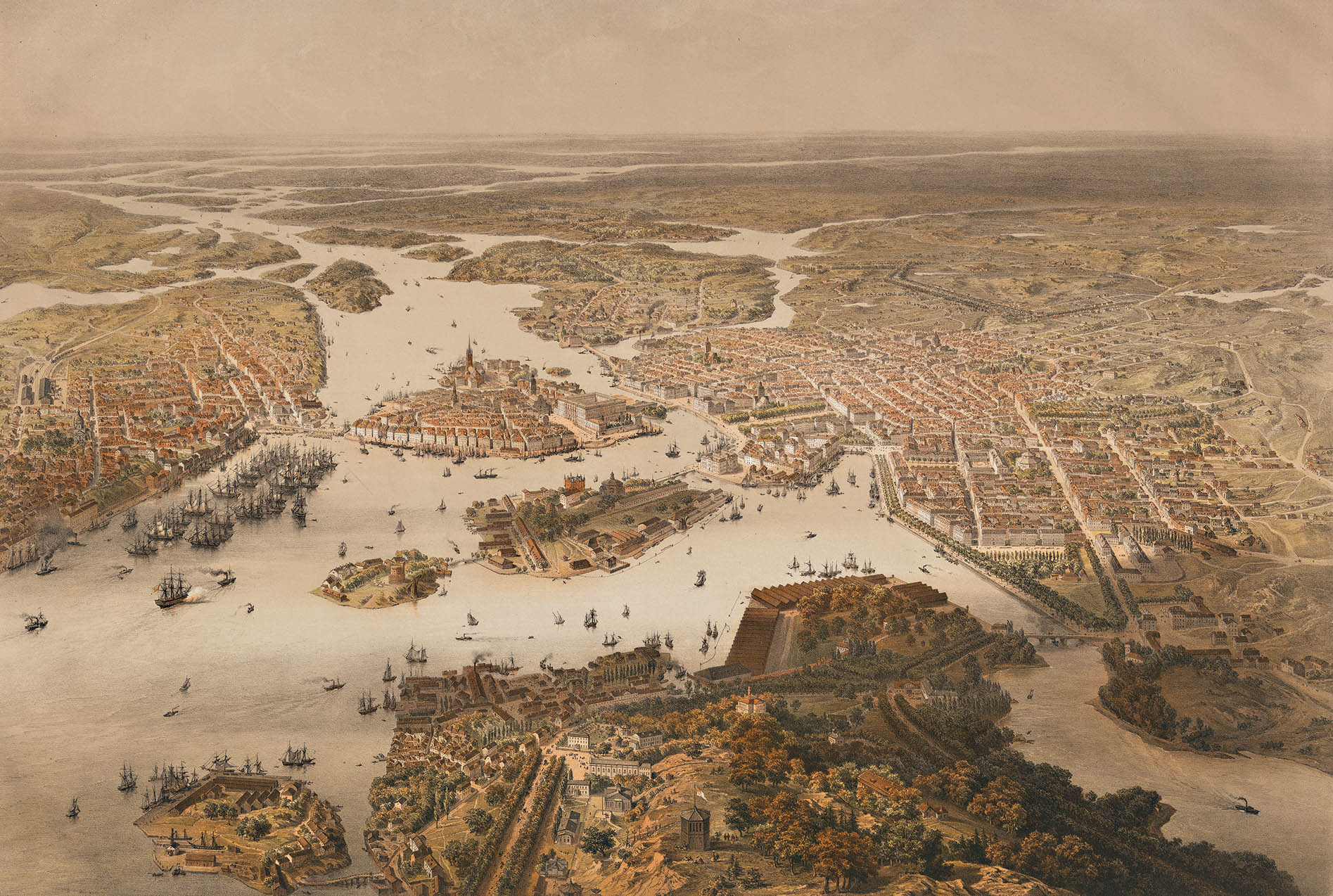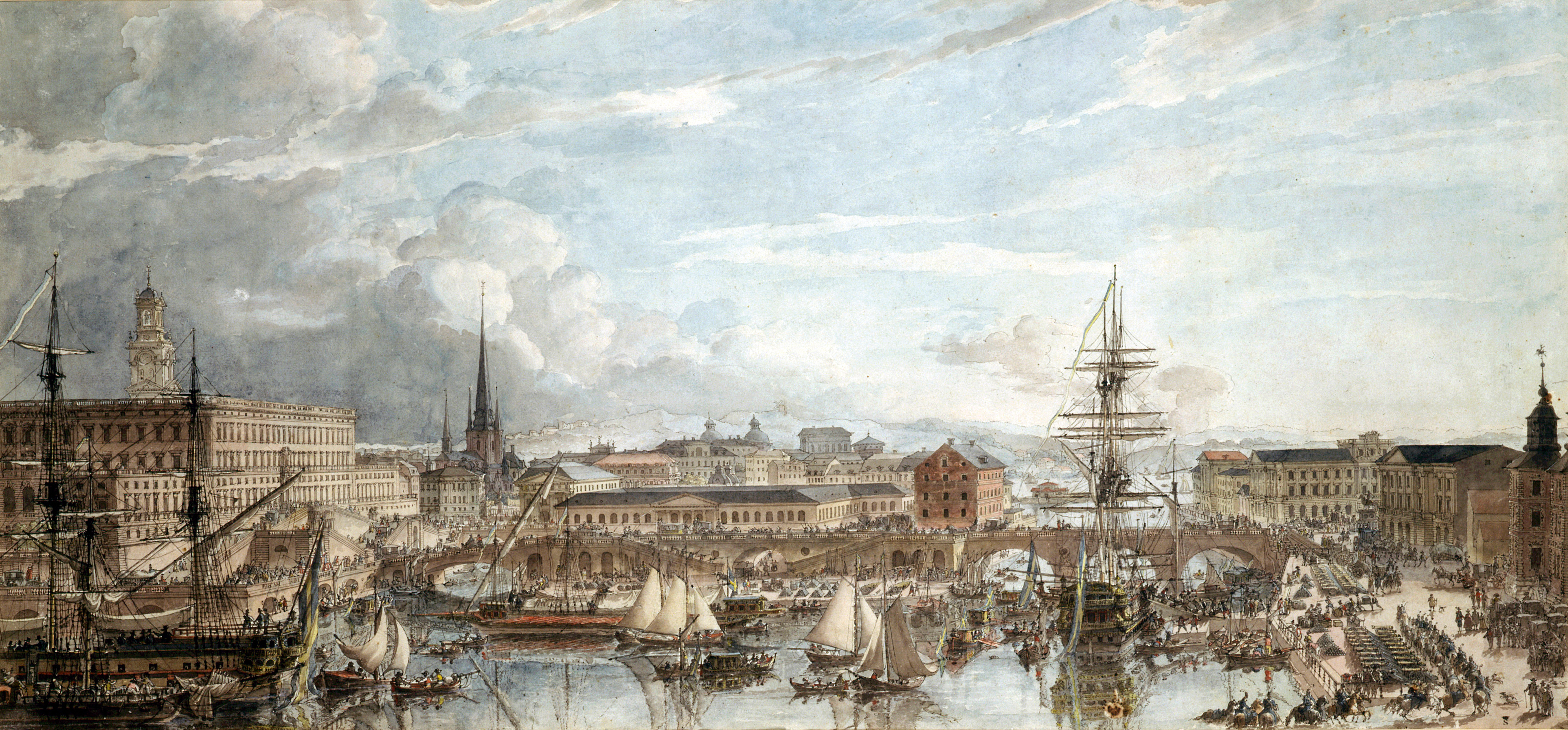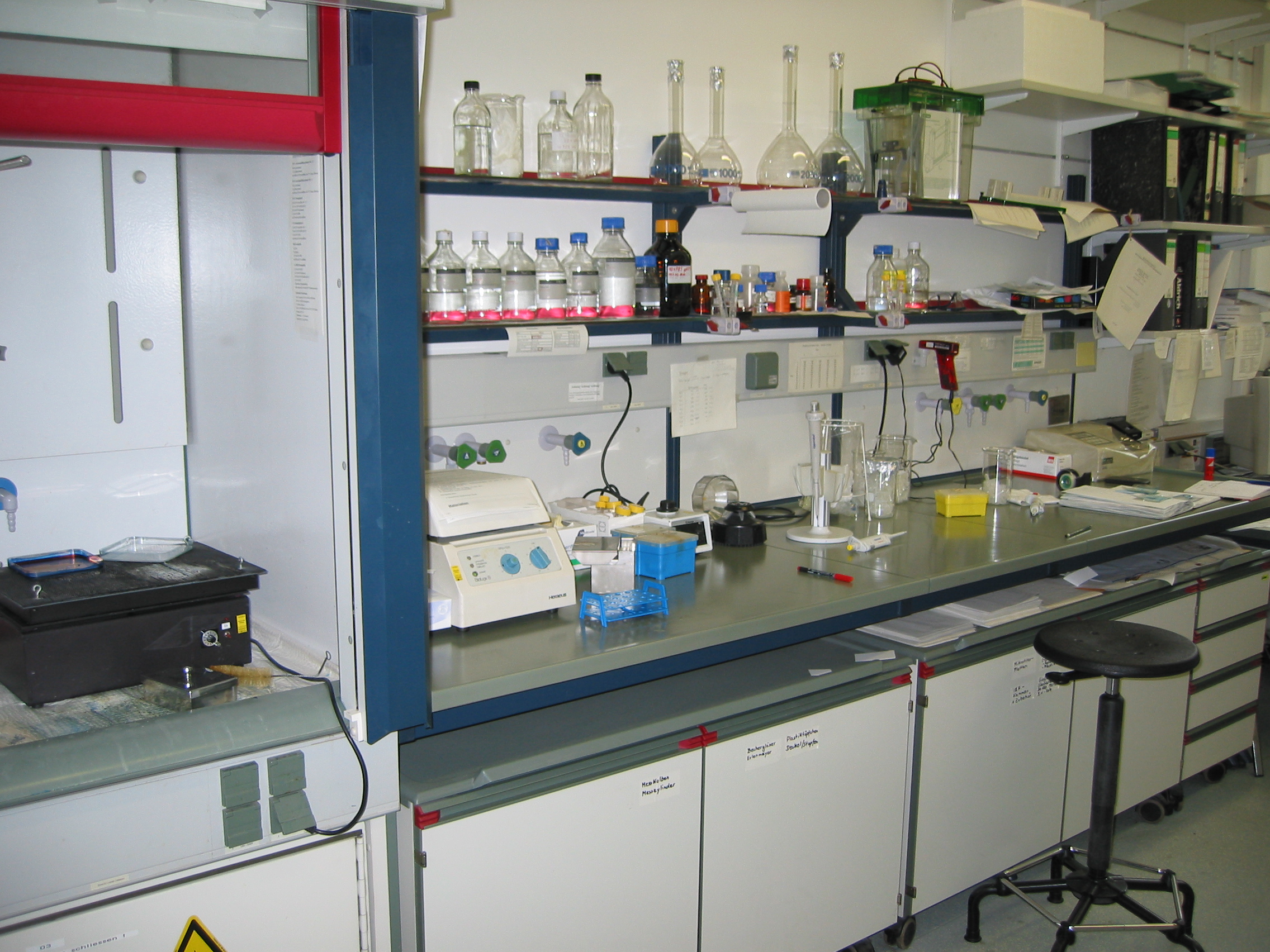|
Carl Axel Arrhenius
Carl Axel Arrhenius (29 March 1757 – 20 November 1824) was a Swedish military officer, amateur geologist, and chemist. He is best known for his discovery of the mineral ytterbite (later called gadolinite) in 1787. The discovery of ytterbite was the first step in identifying an entire group of previously unknown elements, the rare earths. Eight stable rare earth elements were eventually extracted from ytterbite: terbium, dysprosium, holmium, erbium, thulium, ytterbium, lutetium, and yttrium. Early life Arrhenius was born in Stockholm on 29 March 1757 to Jakob Larsson Arrhenius and Brita Sofia Georgii. In 1796 he married Gustafva von Bilang. Career Arrhenius became a lieutenant of the Svea Artillery Regiment of the Swedish army, the regiment being stationed in Vaxholm. As an artillery officer, Arrhenius was assigned to study the characteristics of gunpowder at the Swedish Royal Mint's (Kungliga Myntet) laboratory. Being taught to test gunpowder by Bengt Reinh ... [...More Info...] [...Related Items...] OR: [Wikipedia] [Google] [Baidu] [Amazon] |
Stockholm
Stockholm (; ) is the Capital city, capital and List of urban areas in Sweden by population, most populous city of Sweden, as well as the List of urban areas in the Nordic countries, largest urban area in the Nordic countries. Approximately 1 million people live in the Stockholm Municipality, municipality, with 1.6 million in the Stockholm urban area, urban area, and 2.5 million in the Metropolitan Stockholm, metropolitan area. The city stretches across fourteen islands where Mälaren, Lake Mälaren flows into the Baltic Sea. Outside the city to the east, and along the coast, is the island chain of the Stockholm archipelago. The area has been settled since the Stone Age, in the 6th millennium BC, and was founded as a city in 1252 by Swedish statesman Birger Jarl. The city serves as the county seat of Stockholm County. Stockholm is the cultural, media, political, and economic centre of Sweden. The Stockholm region alone accounts for over a third of the country's Gros ... [...More Info...] [...Related Items...] OR: [Wikipedia] [Google] [Baidu] [Amazon] |
Svea Artillery Regiment
The Svea Artillery Regiment (), designation A 1, was a Swedish Army artillery regiment that traced its origins back to the 17th century. It was disbanded in 1997. The regiment's soldiers were originally recruited from Svealand, and it was also garrisoned there. History The regiment has its origins in the Artillery Regiment (1636), Artillery Regiment raised in 1636. That regiment was split into four new regiments in 1794 of which Svea Artillery Regiment was one. The regiment was given the designation A 1 (1st Artillery Regiment) in 1830. In 1889 three company (military unit), companies garrisoned in Vaxholm became independent and formed Vaxholm Artillery Corps. In 1893 another four companies were split off to form Norrland Artillery Regiment and Uppland Artillery Regiment, 2nd Svea Artillery Regiment. Due to this the regiment also changed name to 1st Svea Artillery Regiment. The name was changed back again in 1904. The regiment was garrisoned in Stockholm but moved to Linköping ... [...More Info...] [...Related Items...] OR: [Wikipedia] [Google] [Baidu] [Amazon] |
Russo-Swedish War (1788–1790)
The Russo-Swedish War of 1788–1790 was fought between Gustavian era, Sweden and Russian Empire, Russia from June 1788 to August 1790. The war was ended by the Treaty of Värälä on 14 August 1790 and took place concomitantly with both the Austro-Turkish War (1788–1791), Russo-Turkish War (1787–1792) and Theatre War. The war was, overall, mostly insignificant for the parties involved. King Gustav III, Gustav III of Sweden initiated the war for domestic political reasons, hoping to gain support from the opposition. Despite forming an alliance with the Ottoman Empire, Sweden failed to secure support from Kingdom of Great Britain, Great Britain, the Dutch Republic, and Kingdom of Prussia, Prussia. Sweden's initial plan to attack Saint Petersburg and instigate a coup to depose Empress Catherine the Great, Catherine II did not materialize. The war led to Denmark–Norway declaring war on Sweden, but peace was eventually signed on 9 July 1789 after diplomatic intervention by Gr ... [...More Info...] [...Related Items...] OR: [Wikipedia] [Google] [Baidu] [Amazon] |
Combustion
Combustion, or burning, is a high-temperature exothermic redox chemical reaction between a fuel (the reductant) and an oxidant, usually atmospheric oxygen, that produces oxidized, often gaseous products, in a mixture termed as smoke. Combustion does not always result in fire, because a flame is only visible when substances undergoing combustion vaporize, but when it does, a flame is a characteristic indicator of the reaction. While activation energy must be supplied to initiate combustion (e.g., using a lit match to light a fire), the heat from a flame may provide enough energy to make the reaction self-sustaining. The study of combustion is known as combustion science. Combustion is often a complicated sequence of elementary reaction, elementary Radical (chemistry), radical reactions. Solid fuels, such as wood and coal, first undergo endothermic pyrolysis to produce gaseous fuels whose combustion then supplies the heat required to produce more of them. Combustion is often hot e ... [...More Info...] [...Related Items...] OR: [Wikipedia] [Google] [Baidu] [Amazon] |
Paris, France
Paris () is the Capital city, capital and List of communes in France with over 20,000 inhabitants, largest city of France. With an estimated population of 2,048,472 residents in January 2025 in an area of more than , Paris is the List of cities in the European Union by population within city limits, fourth-most populous city in the European Union and the List of cities proper by population density, 30th most densely populated city in the world in 2022. Since the 17th century, Paris has been one of the world's major centres of finance, diplomacy, commerce, culture, Fashion capital, fashion, and gastronomy. Because of its leading role in the French art, arts and Science and technology in France, sciences and its early adoption of extensive street lighting, Paris became known as the City of Light in the 19th century. The City of Paris is the centre of the Île-de-France region, or Paris Region, with an official estimated population of 12,271,794 inhabitants in January 2023, or ... [...More Info...] [...Related Items...] OR: [Wikipedia] [Google] [Baidu] [Amazon] |
Antoine Lavoisier
Antoine-Laurent de Lavoisier ( ; ; 26 August 17438 May 1794), When reduced without charcoal, it gave off an air which supported respiration and combustion in an enhanced way. He concluded that this was just a pure form of common air and that it was the air itself "undivided, without alteration, without decomposition" which combined with metals on calcination. After returning from Paris, Priestley took up once again his investigation of the air from mercury calx. His results now showed that this air was not just an especially pure form of common air but was "five or six times better than common air, for the purpose of respiration, inflammation, and ... every other use of common air". He called the air dephlogisticated air, as he thought it was common air deprived of its phlogiston. Since it was therefore in a state to absorb a much greater quantity of phlogiston given off by burning bodies and respiring animals, the greatly enhanced combustion of substances and the greater ease ... [...More Info...] [...Related Items...] OR: [Wikipedia] [Google] [Baidu] [Amazon] |
Senegal
Senegal, officially the Republic of Senegal, is the westernmost country in West Africa, situated on the Atlantic Ocean coastline. It borders Mauritania to Mauritania–Senegal border, the north, Mali to Mali–Senegal border, the east, Guinea to Guinea–Senegal border, the southeast and Guinea-Bissau to Guinea-Bissau–Senegal border, the southwest. Senegal nearly surrounds The Gambia, a country occupying a narrow sliver of land along the banks of the Gambia River, which separates Senegal's southern region of Casamance from the rest of the country. It also shares a maritime border with Cape Verde. Senegal's capital is Dakar. Senegal is the westernmost country in the mainland of the Old World, or Afro-Eurasia. It owes its name to the Senegal River, which borders it to the east and north. The climate is typically Sahelian, though there is a wet season, rainy season. Senegal covers a land area of almost and has a population of around 18 million. The state is a Presidential system ... [...More Info...] [...Related Items...] OR: [Wikipedia] [Google] [Baidu] [Amazon] |
Anders Sparrman
Anders Sparrman (27 February 1748 – 9 August 1820) was a Swedish naturalist, abolitionist and an apostle of Carl Linnaeus. Biography left, Miniature of Sparrman at the time of his travels with James Cook. By unknown artist. Born in Tensta, Uppland, Sparrman was the son of a clergyman. At the age of nine he enrolled at Uppsala University, beginning medical studies at fourteen and becoming one of the outstanding pupils of Linnaeus. In 1765 he went on a voyage to China as ship's doctor, returning two years later and describing the animals and plants he had encountered. On this voyage he met Carl Gustaf Ekeberg. He sailed for the Cape of Good Hope in January 1772 to do natural history research, supporting himself by tutoring children. When James Cook arrived there later in the year at the start of his second voyage, Sparrman was taken on as assistant naturalist to Johann and Georg Forster. After the voyage he returned to Cape Town in July 1775 and practiced medicine, earning ... [...More Info...] [...Related Items...] OR: [Wikipedia] [Google] [Baidu] [Amazon] |
Carl Bernhard Wadström
Carl may refer to: *Carl, Georgia, city in USA *Carl, West Virginia, an unincorporated community *Carl (name), includes info about the name, variations of the name, and a list of people with the name *Carl², a TV series * "Carl", an episode of television series ''Aqua Teen Hunger Force'' * An informal nickname for a student or alum of Carleton College CARL may refer to: *Canadian Association of Research Libraries *Colorado Alliance of Research Libraries See also *Carle (other) *Charles *Carle, a surname *Karl (other) *Karle (other) Karle may refer to: Places * Karle (Svitavy District), a municipality and village in the Czech Republic * Karli, India, a town in Maharashtra, India ** Karla Caves, a complex of Buddhist cave shrines * Karle, Belgaum, a settlement in Belgaum ... {{disambig ja:カール zh:卡尔 ... [...More Info...] [...Related Items...] OR: [Wikipedia] [Google] [Baidu] [Amazon] |
Mineralogy
Mineralogy is a subject of geology specializing in the scientific study of the chemistry, crystal structure, and physical (including optical mineralogy, optical) properties of minerals and mineralized artifact (archaeology), artifacts. Specific studies within mineralogy include the processes of mineral origin and formation, classification of minerals, their geographical distribution, as well as their utilization. History Early writing on mineralogy, especially on gemstones, comes from ancient Babylonia, the ancient Greco-Roman world, ancient and medieval History of China, China, and Sanskrit texts from History of India, ancient India and the ancient Islamic world. Books on the subject included the ''Naturalis Historia, Natural History'' of Pliny the Elder, which not only described many different minerals but also explained many of their properties, and Kitab al Jawahir (Book of Precious Stones) by Persian scientist Al-Biruni. The German Renaissance specialist Georgius Agricola ... [...More Info...] [...Related Items...] OR: [Wikipedia] [Google] [Baidu] [Amazon] |
Chemistry
Chemistry is the scientific study of the properties and behavior of matter. It is a physical science within the natural sciences that studies the chemical elements that make up matter and chemical compound, compounds made of atoms, molecules and ions: their composition, structure, properties, behavior and the changes they undergo during chemical reaction, reactions with other chemical substance, substances. Chemistry also addresses the nature of chemical bonds in chemical compounds. In the scope of its subject, chemistry occupies an intermediate position between physics and biology. It is sometimes called the central science because it provides a foundation for understanding both Basic research, basic and Applied science, applied scientific disciplines at a fundamental level. For example, chemistry explains aspects of plant growth (botany), the formation of igneous rocks (geology), how atmospheric ozone is formed and how environmental pollutants are degraded (ecology), the prop ... [...More Info...] [...Related Items...] OR: [Wikipedia] [Google] [Baidu] [Amazon] |
Peter Jacob Hjelm
Peter (Petter) Jacob Hjelm (2 October 1746 – 7 October 1813) was a Swedish chemist and the first person to isolate the element molybdenum in 1781, four years after its discovery by Swedish chemist Carl Wilhelm Scheele. Working with Molybdic acid, Hjelm chemically reduced molybdenum oxide with carbon in an oxygen-free atmosphere, resulting in carbon dioxide and a near-pure dark metal powder to which he gave the name 'molybdenum'. His first publication on molybdenum appeared in 1790. Childhood Hjelm was born at Sunnerbo in Småland, Sweden in 1746. The son of parish priest Erik Hjelm and Cecilia Cecilia Gistrénia, he was raised in the parish of Göteryd in Älmhult. Career After studying at the University of Uppsala, he received his Ph.D. He became professor at the Mining academy and in 1782 he became Proberare of the Royal Mint, with the job of analyzing minerals to determine their content. From 1784 on he was a member of the Royal Swedish Academy of Sciences The ... [...More Info...] [...Related Items...] OR: [Wikipedia] [Google] [Baidu] [Amazon] |





